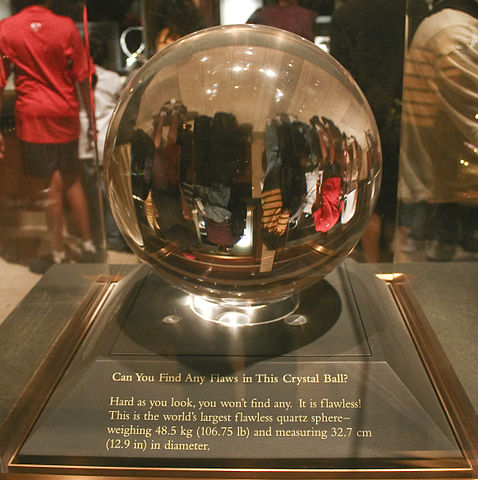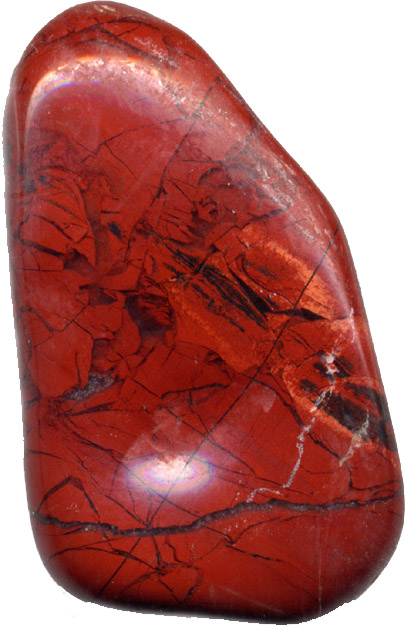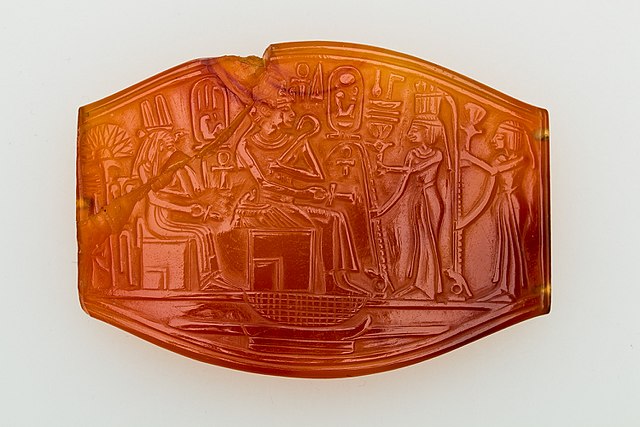Quartz
Quartz is a hard, crystalline mineral composed of silica (silicon dioxide). There are many different varieties of quartz, several of which are classified as gemstones. Since antiquity, varieties of quartz have been the most commonly used minerals in the making of jewelry and hardstone carvings, especially in Eurasia.
Quartz is the mineral defining the value of 7 on the Mohs scale of hardness, a qualitative scratch method for determining the hardness of a material to abrasion. Quartz is the second most abundant mineral in Earth's continental crust, behind feldspar.
Etymology
The word "quartz" is derived from the German word "Quarz," which had the same form in the first half of the 14th century in Middle High German and in East Central German and which came from the Polish dialect term kwardy, which corresponds to the Czech term tvrdý ("hard").
The Ancient Greeks referred to quartz as κρύσταλλος (krustallos) derived from the Ancient Greek κρύος (kruos) meaning "icy cold," because some philosophers (including Theophrastus) apparently believed the mineral to be a form of supercooled ice. Today, the term rock crystal is sometimes used as an alternative name for transparent coarsely crystalline quartz.
History of human use
Quartz is the most common material identified as the mystical substance maban in Australian Aboriginal mythology. It is found regularly in passage tomb cemeteries in Europe in a burial context, such as Newgrange or Carrowmore in Ireland. The Irish word for quartz is grianchloch, which means 'sunstone'. Quartz was also used in Prehistoric Ireland, as well as many other countries, for stone tools; both vein quartz and rock crystal were knapped as part of the lithic technology of the prehistoric peoples.
While jade has been since earliest times the most prized semi-precious stone for carving in East Asia and Pre-Columbian America, in Europe and the Middle East the different varieties of quartz were the most commonly used for the various types of jewelry and hardstone carving, including engraved gems and cameo gems, rock crystal vases, and extravagant vessels. The tradition continued to produce objects that were very highly valued until the mid-19th century, when it largely fell from fashion except in jewelry. Cameo technique exploits the bands of color in onyx and other varieties.
Roman naturalist Pliny the Elder believed quartz to be water ice, permanently frozen after great lengths of time. (The word "crystal" comes from the Greek word κρύσταλλος, "ice".) He supported this idea by saying that quartz is found near glaciers in the Alps, but not on volcanic mountains, and that large quartz crystals were fashioned into spheres to cool the hands. This idea persisted until at least the 17th century. He also knew of the ability of quartz to split light into a spectrum.
In the 17th century, Nicolas Steno's study of quartz paved the way for modern crystallography. He discovered that regardless of a quartz crystal's size or shape, its long prism faces always joined at a perfect 60° angle.
Modern electronics
Quartz's piezoelectric properties were discovered by Jacques and Pierre Curie in 1880. The quartz oscillator or resonator was first developed by Walter Guyton Cady in 1921. George Washington Pierce designed and patented quartz crystal oscillators in 1923. Warren Marrison created the first quartz oscillator clock based on the work of Cady and Pierce in 1927.
By the 1930s, the electronics industry had become dependent on quartz crystals. The only source of suitable crystals was Brazil; however, World War II disrupted the supplies from Brazil, so nations attempted to synthesize quartz on a commercial scale. German mineralogist Richard Nacken (1884–1971) achieved some success during the 1930s and 1940s. After the war, many laboratories attempted to grow large quartz crystals. In the United States, the U.S. Army Signal Corps contracted with Bell Laboratories and with the Brush Development Company of Cleveland, Ohio to synthesize crystals following Nacken's lead. By 1948, Brush Development had grown crystals that were 1.5 inches (3.8 cm) in diameter, the largest to date. By the 1950s, hydrothermal synthesis techniques were producing synthetic quartz crystals on an industrial scale, and today virtually all the quartz crystal used in the modern electronics industry is synthetic.
Varieties of quartz
- Amethyst - Purple to violet colored quartz.
- Citrine - Yellow quartz ranging to reddish-orange or brown (Madera quartz), and occasionally greenish yellow.
- Rose quartz - Pink.
- Chalcedony - Fibrous, variously translucent, occurring in many varieties.
- Carnelian - Reddish orange.
- Aventurine - With tiny aligned inclusions (usually mica) that shimmer.
- Agate - Multi-colored, curved or concentric banded chalcedony.
- Onyx - Multi-colored, straight banded chalcedony or chert.
- Jasper - Opaque cryptocrystalline quartz, typically red to brown but often used for other colors.
- Milky quartz - White, may display diasterism.
- Smoky quartz - Light to dark gray, sometimes with a brownish hue.
- Tiger's eye - Fibrous gold, red-brown or bluish colored chalcedony, exhibiting chatoyancy.
- Prasiolite - Green.
- Rutilated quartz - Contains acicular (needle-like) inclusions of rutile.
- Dumortierite quartz - Blue colored containing abundant dumortierite inclusions.
Spiritual uses
Quartz crystal is prized in the esoteric community for varied uses. It is considered a powerful healing mineral able to work on any condition. Due to its many uses, quartz has been called the "Universal Crystal" because is beneficial for manifesting, healing, meditation, protection, and channeling. As a stone with the ability to bring balance, quartz is excellent for harmonizing and stabilizing the surrounding environment and can be helpful in romantic relationships.
Quartz is an intensely spiritual stone with the ability to enhance spiritual growth, spirituality, and wisdom. Because it clarifies thought processes and emotions, it can increase inspiration and creativity. It can also help with concentration, studying, and retention of knowledge.
Crystal balls used in the practice of scrying are often made of perfectly clear, flawless quartz. This allows the seer to gaze into the crystal for purposes of divination of the future.
Quartz crystal is associated with Archangel of the Zodiac Gabriel, who rules over the sign of Aquarius.
Egyptian spiritual use
Ancient Egyptians valued quartz and frequently carved it into vessels for use in everyday life. The Egyptian word for quartz was mnw. In the Pyramid Texts, Spells 54 and 55 offers the Eye of Horus wine in a white quartz bowl and beer in a smoky quartz bowl. Grave goods made of quartz in the form of vases and beer glasses have been found in Egyptian tombs dating to at least the First Intermediate Period (2100 BC). They also frequently carved seals and protective amulets out of quartz or varieties of quartz.
Many of the Egyptian decans had quartz as the primary mineral by which they could be honored or invoked.
- Khentet heret - Smoky quartz and gold.
- Remen Hery Sah - Quartz and gold.
- Remen Khery Sah - Quartz and gold.
Mining
Quartz is extracted from open pit mines. Miners occasionally use explosives to expose deep pockets of quartz. More frequently, bulldozers and backhoes are used to remove soil and clay and expose quartz veins, which are then worked using hand tools. Care must be taken to avoid sudden temperature changes that may damage the crystals.
Almost all the industrial demand for quartz crystal (used primarily in electronics) is met with synthetic quartz produced by the hydrothermal process. However, synthetic crystals are less prized for use as gemstones. The popularity of crystal healing has increased the demand for natural quartz crystals, which are now often mined in developing countries using primitive mining methods, sometimes involving child labor.


